To say that Raina Telgemeier is the closest thing to a superstar in the comics industry leaves out the cardinal reason for her well-deserved popularity: her beautifully crafted stories touch on issues that affect every aspect of the soul. In her works readers tackle critical matters of inner humanity, from the tribulations of growing up, to understanding the depths of friendship, to sibling rivalry and reconciliation, and now, accepting the mysterious dimensions of love, culture, and death.
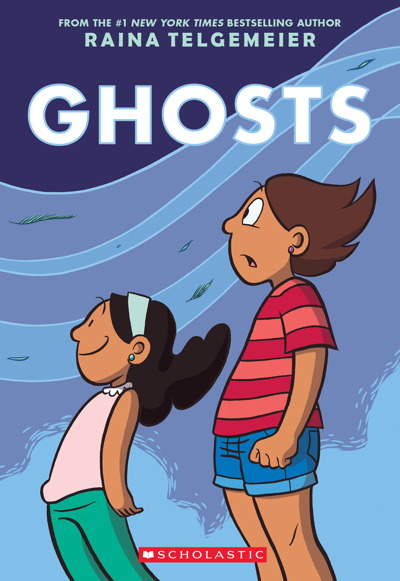
Raina’s latest graphic novel is called Ghosts, and it is a bold departure from the types of stories she has chosen to tell in her in previous works. While Smile and its excellent sequel Sisters are about Raina’s early life and family, and Drama is about the travails of schoolyard romance, Ghosts (Graphix, $24.99) is something different altogether. While still a whimsically drawn and written book, the themes of Ghosts are manifest in a different tenor. Here, Raina has produced an honest comic that offers a substantive mediation of human existence, incorporating elements of magical realism to consider the nature of cultural identity and reconciliation with lost loved ones. (For this reason alone, I feel that the “Children’s Book” appellation given to this comic does not do it any justice and misses the point altogether.)
At the center of the tale are two sisters named Catrina and Maya. Maya, the younger sister, is afflicted by the debilitating chronic disease cystic fibrosis (which primarily affects the lungs), and because of her condition, her family moves from Southern California to the fictional Northern California coastal haunt of Bahía de la Luna, a town that contains many secrets. In Bahía de la Luna, the Day of the Dead is a major celebration and connection to Mexican heritage is suffused throughout the community (even to those who don’t speak Spanish, like Cat and Maya’s mother). Indeed, not even settled into their new home, Maya and Cat are invited by local boy Carlos to explore the cultural heritage of the town (by going on a ghost tour), which centers around the presence of otherworldly spirits. These aren’t pernicious spirits though, but conduits to a world that was. A world that is yet to be.
Raina’s story is particularly crisp and nuanced. The rapport between Cat and Maya is a sweet one, though clouded by a lingering melancholy. To be sure, Cat is forever worried about her sister’s condition (with good reason), which is exacerbated by Maya’s keen sense of adventure. (At one point, Maya candidly states: “I want to know what happens when you die.”) Maya knows that her life is a difficult one, yet she always looking on the bright side of life, trying to find something to live for. In short order, when Maya is incapacitated by her disease by overeager spirits and is waylaid into a breathing tube, Cat’s inner conscience is racked with guilt: she wasn’t there to protect her sister.
Also at play, though more below the surface, is the role of cultural assimilation. In lesser hands, this topic might have been a portrayed melodramatically, but instead Raina is restrained and mature in her approach, capturing the conflict within Cat as both an adolescent in search of independence as well as protector to her vulnerable sister. Maya, on the other hand, is excited to discover what her heritage truly means. Given the backdrop of her coping with the symptoms of her condition, her eagerness to participate in the Day of the Dead celebrations brings an immediate, lasting poignancy to her character.
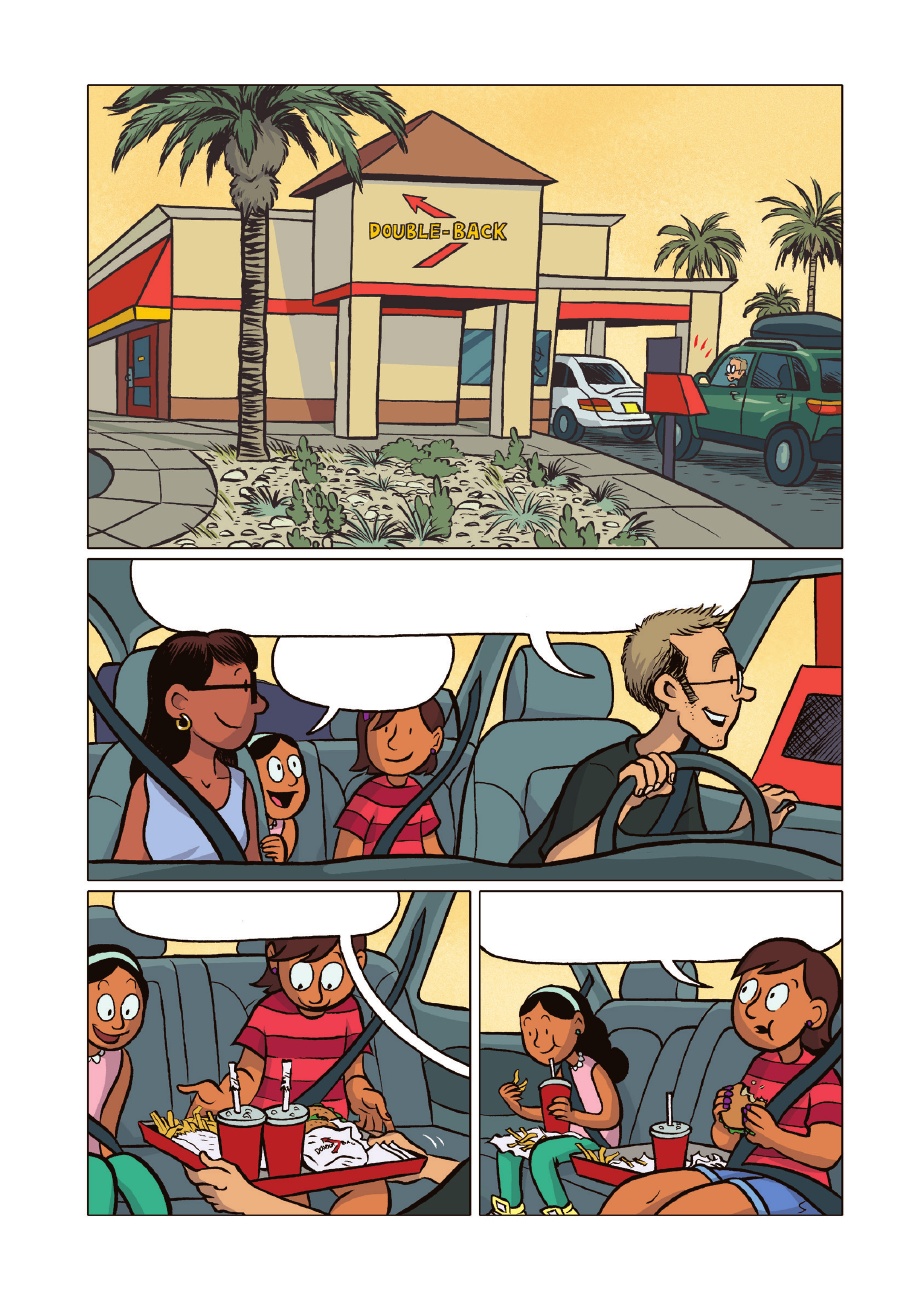
With Ghosts, readers are left with a meaningful, searching graphic novel, one that provokes deep thought afterward. What do the people close to me mean? How will we remember them when/after they pass? How will we keep the flame of their memory alive? There are no easy answers, and every culture has its own. Ghosts constrains its focus by using the Day of the Dead as a mechanism to raise these questions without answering them. And the results are profoundly affecting. Those who have lost loved ones will recognize the emotional impact of the climactic scenes, while those who haven’t can still appreciate their muted poise and dignified air.
Without a doubt, Ghosts is a worthy addition to a body of work that continues to impress and grow with each new addition to the canon.
Ghosts
Raina Telgemeier
Scholastic Graphix
$24.99, 256 pages


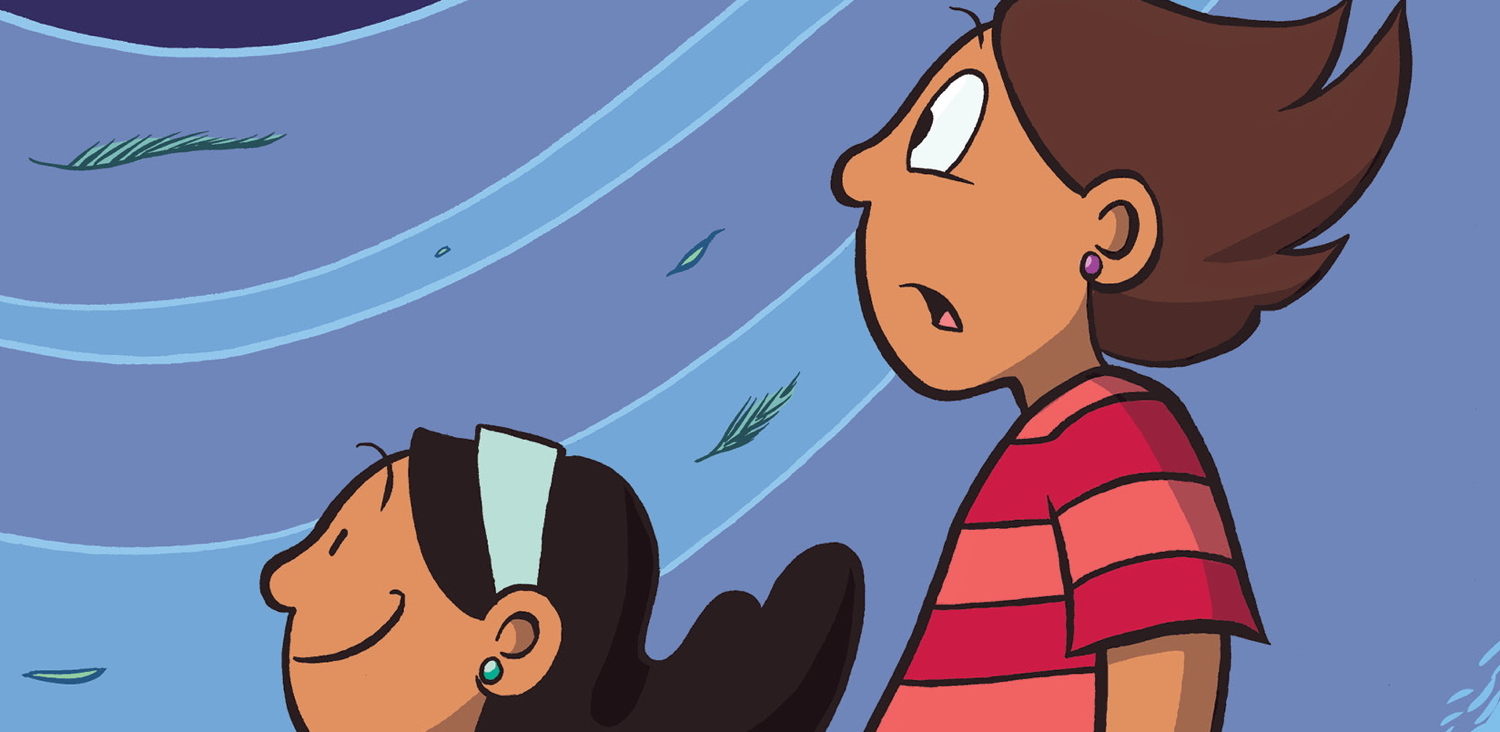
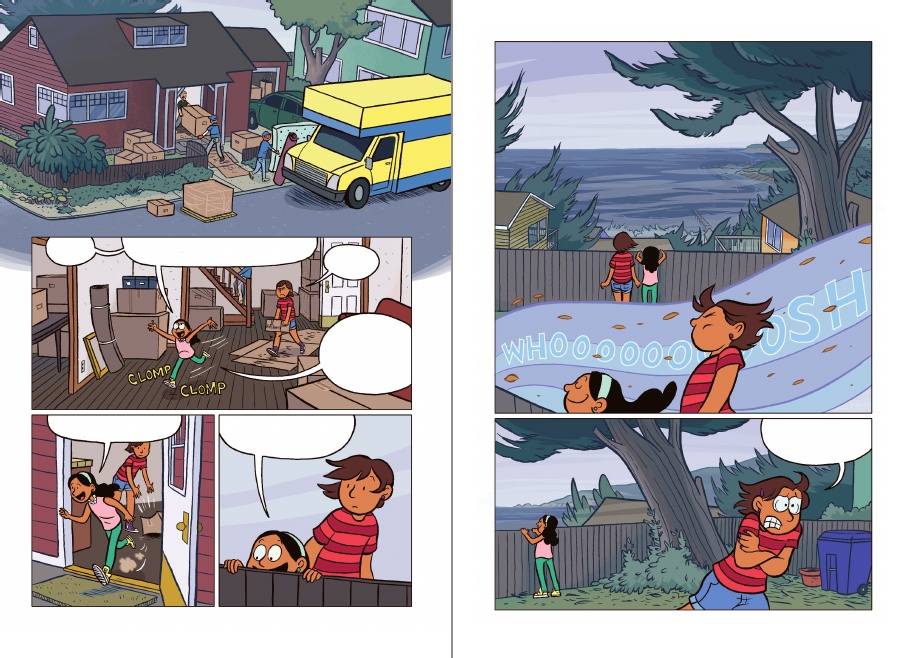
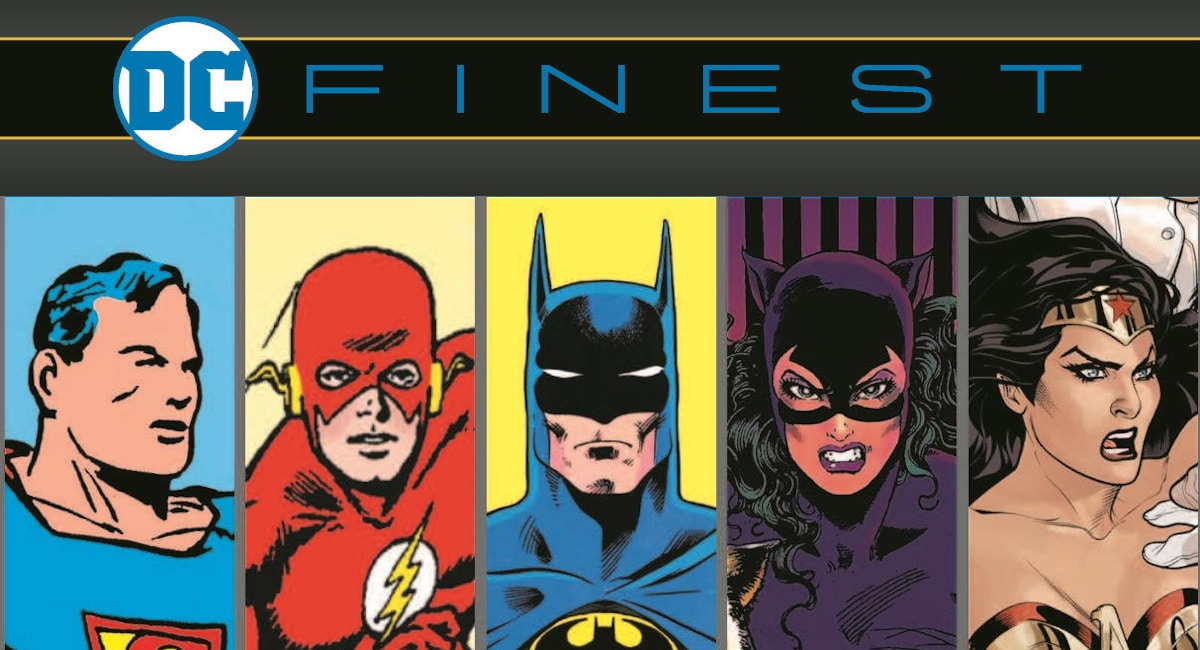
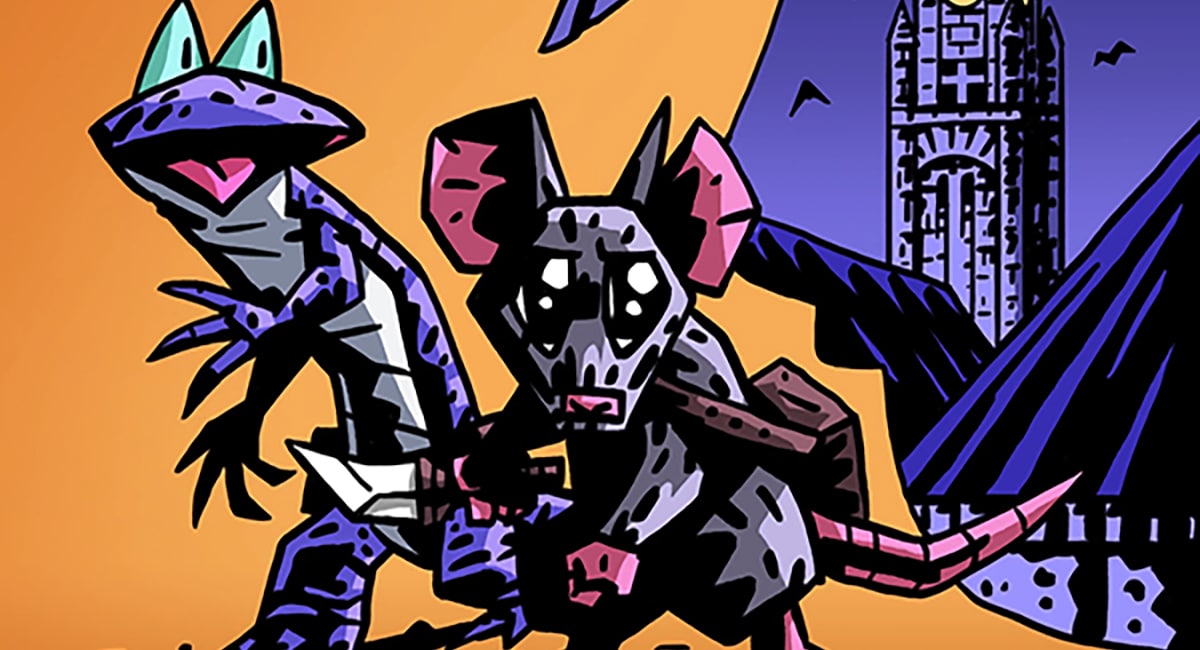
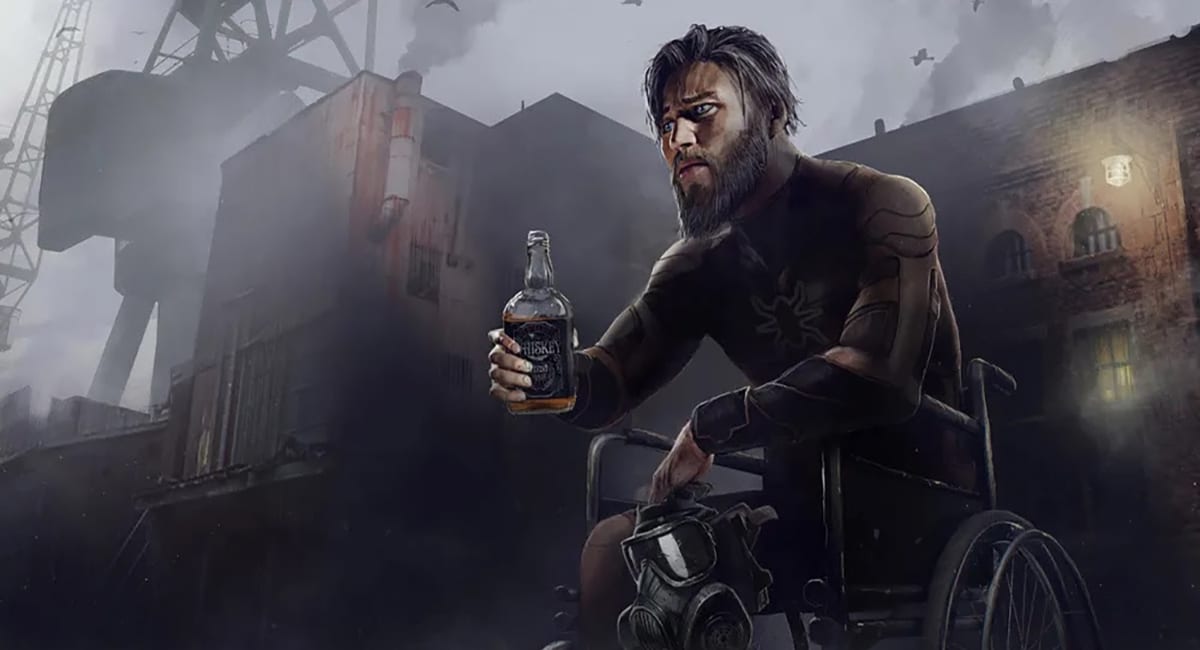



You praised her 3 GNs, and rightly so, but don’t overlook her BABY-SITTERS CLUB adaptations! The first two volumes are a little light, but try the third one (MARY ANNE SAVES THE DAY) if you want a great story actually earning the much abused “all-ages” tag.
> her breakthrough book Smile
I think it was such a breakthrough because she did it as a free webcomic, that helped seed or create her audience for the later print collection. Otherwise, I’m not sure the market would have let Raina go! (One could make the same argument for NIMONA, DIGGER, THROUGH THE WOODS, etc.)
> Ghosts (Graphix, $24.99)
Yes, and GHOSTS is also out for $11. ($25 being the hardcover.)
As an aside, she said she was inspired by Latin-American lit, so I wouldn’t be surprised if that included César Aira’s own GHOSTS (1990, tr. 2009). Or maybe not, but that would still be an interesting “what to read next” (a girl who can see ghosts is invited to their greatest party, so she has to ponder becoming one of them…) — http://www.complete-review.com/reviews/argentina/airac4.htm
Teachers should note that Scholastic has already produced a teaching guide (a pamphlet) with reproducibles, writing prompts, etc. that could help just about anyone to use GHOSTS in the classroom. The book is also a featured selection in the Fall 2016 Scholastic Book Fair (mine is scheduled for next week) – and my students are already clamoring for the book.
Ghosts is the best book ever that anyone should own.
Comments are closed.